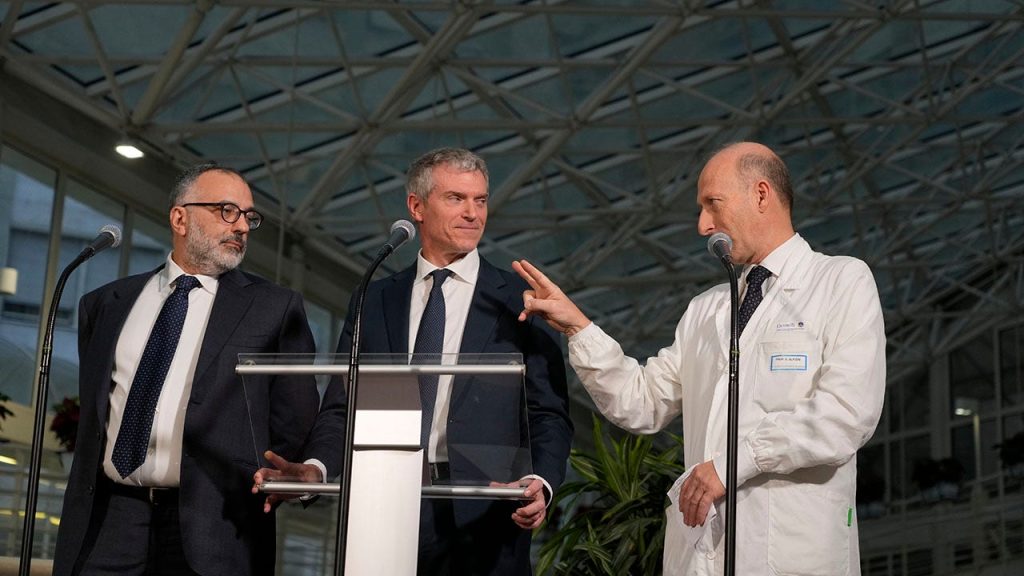In a significant health update, Pope Francis is set to be discharged from Gemelli Hospital after a prolonged hospitalization stemming from severe pneumonia. Medical director Dr. Sergio Alfieri stated that the 88-year-old pontiff has shown a slow but steady improvement, despite facing critical situations that threatened his life. The Vatican has confirmed that the pope will make a public appearance to bless the faithful from the hospital before returning to the Vatican, where he will undergo further recovery and rehabilitation.
| Article Subheadings |
|---|
| 1) Medical Condition and Treatment |
| 2) The Pope’s Hospitalization Journey |
| 3) Upcoming Public Blessing |
| 4) Future Recovery and Rehabilitation Plans |
| 5) Global Reactions and Remarks |
Medical Condition and Treatment
Pope Francis has spent the last several weeks battling a life-threatening pneumonia that initially arose from complications following a serious case of bronchitis. Dr. Alfieri reported that the pope had faced “two very critical episodes” during his hospitalization that placed his life in jeopardy. Fortunately, through a combination of pharmacological therapy, high flow oxygen, and mechanical ventilation assistance, Francis has begun to regain his strength. Notably, he was never intubated nor did he lose consciousness during this period, which has provided some comfort to worried supporters and followers. Official statements disclosed that the chief complication was an acute respiratory failure due to a polymicrobial infection.
The Pope’s Hospitalization Journey
Pope Francis was admitted to Gemelli Hospital in Rome on February 14, following a diagnosis of pneumonia in both lungs. The hospitalization, which has now extended over 38 days, has become the longest of his papacy. Upon admission, the pope showed indications of anemia, diminished blood platelets, and early stages of kidney failure, conditions that were effectively managed after two blood transfusions. The hospital staff worked tirelessly as Francis struggled through multiple setbacks, including acute coughing fits and the necessity for a noninvasive ventilation mask. Reports indicated that these respiratory crises were managed through careful medical intervention and monitoring.
Upcoming Public Blessing
In an uplifting turn of events, the Vatican announced that Pope Francis would address the public on Sunday from his 10th floor hospital suite. This appearance will serve as a crucial moment for both the pontiff and his followers, marking his first live public blessing since admission. Alfieri expressed optimism regarding the pope’s recovery, captured by the fact that he will address the faithful despite needing to refrain from extensive public engagements for two months. The opportunity to bless the public not only draws attention to his resilience but also serves as a signal of hope for millions who regard the pope as a spiritual leader.
Future Recovery and Rehabilitation Plans
Dr. Alfieri emphasized the importance of a calm and structured recovery plan for Pope Francis once he returns to the Vatican. The recommendation is for the pope to avoid large crowds and public events during his recuperation. This period is essential as the pontiff’s recovery involves managing existing infections and gradually restoring his lung strength. The traditional recovery time is estimated at two months, during which time it is crucial for him to have peaceful surroundings to support his healing process. This careful approach comes after the realization that exposure to viruses posed risks for such a health-compromised individual.
Global Reactions and Remarks
The news of Pope Francis’ improved condition has sparked widespread reactions and sentiments from around the globe. His followers have expressed relief and joy over his gradual recovery, and numerous world leaders have sent their well-wishes, acknowledging the pontiff’s significant role in global discussions on peace, health, and spirituality. Moreover, the Vatican has taken proactive steps to relay information about his health status, with significant public interest in updates reflecting the pope’s health and activities. The overwhelming response also emphasizes the impact of his teachings and messages at a time of global uncertainty, capturing the essence of his leadership.
| No. | Key Points |
|---|---|
| 1 | Pope Francis will be discharged from Gemelli Hospital after a prolonged battle with pneumonia. |
| 2 | Dr. Sergio Alfieri reported significant improvements in the pope’s condition despite critical episodes. |
| 3 | The pontiff is expected to make a public appearance to bless the faithful after his discharge. |
| 4 | Rest and rehabilitation will take priority in the pope’s recovery process post-discharge. |
| 5 | Global reactions reflect the public’s concern and support for Pope Francis during his health challenges. |
Summary
The gradual recovery of Pope Francis from a serious bout of pneumonia represents not just a medical milestone, but also a moment of hope for millions around the world. His upcoming public blessing signifies resilience and connection with his followers, emphasizing the vital role he plays as a spiritual leader. As he embarks on a path towards recovery, the anticipation surrounding his health will likely continue to resonate across nations, reinforcing the importance of compassion, faith, and healing in times of medical and spiritual need.
Frequently Asked Questions
Question: What health issues did Pope Francis face during his hospitalization?
Pope Francis faced life-threatening pneumonia, experienced acute respiratory failure, and had to manage complex infections before stabilizing.
Question: How long was Pope Francis hospitalized?
The pope was hospitalized for 38 days, marking the longest hospitalization of his papacy, from February 14 to his expected discharge.
Question: What does the pope’s recovery plan involve?
His recovery plan involves at least two months of rest and rehabilitation, with a focus on avoiding public engagements and crowds to enhance healing.


